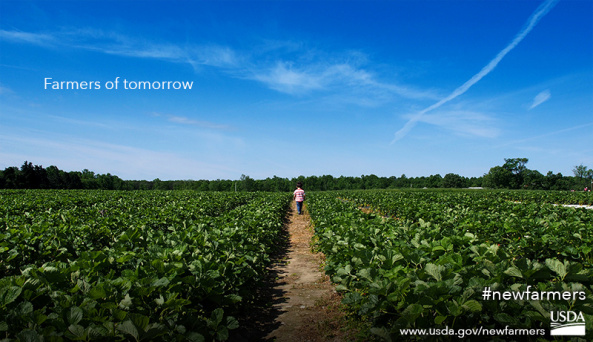USDA Launches New Website for New Farmers and Ranchers
Source: Logan Britton, 2014 National FFA Organization Communications Intern
Farmers work hard. They work to produce food that will eventually be on our dinner plate, while dealing with unpredictable weather, long hours and countless risks. New farmers face more obstacles with starting their operations with acquiring land, equipment and capital as well as learning about regulations and insurance policies.
With these new challenges, the U.S. Department of Agriculture hopes to guide the next generation of farmers for their future careers. As FFA members are also preparing to be future leaders in the industry, USDA’s New Farmers website could be used as a valuable resource.
The website takes users through a step-by-step process in creating an operation. These steps include education and technical assistance, acquiring land and capital, managing risk and financial management.
FFA members trying to start their supervised agriculture experience programs can find youth loans useful. The Farm Service Agency provides up to $5,000 to be used to buy livestock, seed, equipment and other operational items. If an FFA member wanted to expand their SAE, they could check out value-added producer grants and the USDA National Farmers Market Directory. These resources could help a member find different ways to sell their products in new markets.
Krysta Harden, agriculture deputy secretary, said the age of farmers is increasing, with the average age currently standing at 58 years old.
“New and beginning farmers are the future of American agriculture,” Harden said. “For agriculture to continue prospering in this country, we need to offer products and policies that address the unique challenges and issues facing new and beginning farmers. This website aims to address some of those challenges and make getting started just a little bit easier for the next generation.”
The website also provides information for creating a business plan as well as blogs and videos of topics that pertain to new farmers and ranchers.











